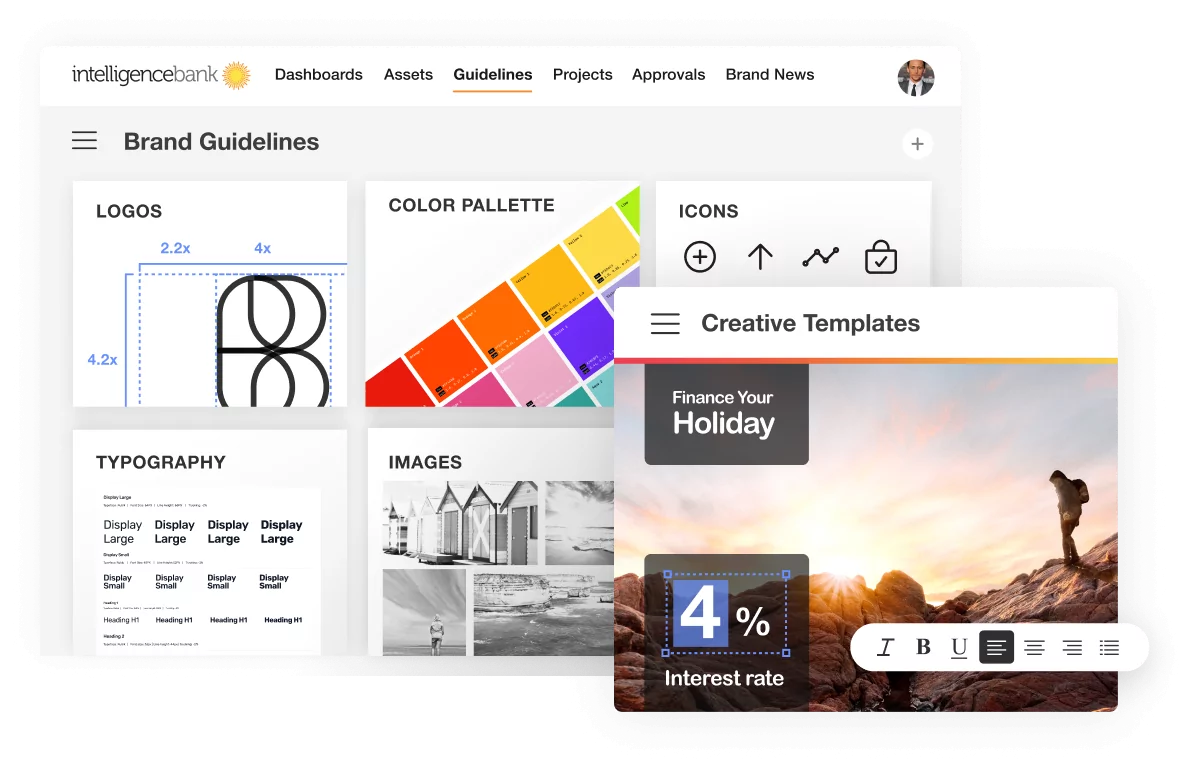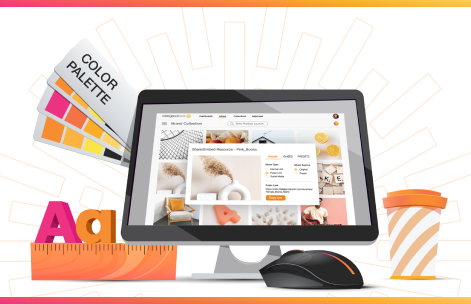Public service announcement:
Attention! All those with Brand Guidelines trapped in PDFs on a share drive. It’s 2023. Put your hands in the air and your brand guidelines online. Repeat, put your brand guidelines on. the. line.
OK, it’s 2023, and in case you missed it, online brand guidelines portals are well and truly a thing. If you’re in the business of brand maintenance and management, then you know that online brand guidelines are essential for creating a consistent picture of who you are in people’s minds. But what do these guidelines look like in 2023? And what is the best way to ensure creatives and partners use them? Let’s take a look at some of the latest inclusions and how they can help your business stay compliant.
Brand Guidelines belong online
Unless you want to run a brand guidelines protection racket, it’s really hard to get today’s creatives to engage with a style guide that is not immediately accessible and as dynamic as they are. You may have a slick 50 page static PDF sitting on a share drive, but chances are your creative team or freelancers read it once, but don’t have an ongoing relationship with it. An online brand guideline portal is the answer to getting those carefully crafted pixels more PDAs and at the same time foster a way deeper understanding of your brand.
Creating a home base for your brand’s distinctive elements such as logos, colors, fonts, imagery, tone of voice and brand story makes them more accessible – but importantly – it allows you to incorporate engaging rich media such as video and audio clips to amplify tone and culture. This is vital to achieving consistency across all brand touch points in the now fragmented, fast paced creator led world filled with colabs and brand mash ups.
But while having an online brand portal is a great start, having brand guidelines threaded into your creative workflow is even better. At IntelligenceBank, our clients’ online brand guidelines are an integral part of their brand management software. This means that while the guidelines live in a BrandHub, they can also be automatically threaded into the briefs as a method of ensuring everyone is working with the latest updates.
The reasons we need brand guidelines have not changed. Whether they stay in a stand alone portal or are incorporated into briefings and reviews, 2023 will see them increasingly elevated, augmented…and…well…actually used.

Image: IntelligenceBank Brand Guidelines Portal
Brand Guidelines evolution in 2023
So now we’ve established brand guidelines must be online, expect to see:
Personalization of Brand Guidelines
Depending on people’s role within the brand team, they’ll want different things from the brand guidelines. Designers want access to the rules, creatives want access to the depth of the personality, and collaborators may just need access to a JPEG logo. Online brand portals allow you to customise the experience by job function, whether they are newcomers or by brand and importantly, sub-brand. IntelligenceBank specializes in allowing brands to have customized Sub-Brands, which is common for large enterprises. For example, each sub-brand’s guidelines have their own unique style inline with that sub-brand.
A Richer Brand Guidelines Experience
Online guidelines make for a more interactive experience. As well as navigation and search that allows users to find what they need faster they include explainer videos; for example, introductions from the CEO and other inspiring rich media assets.
UI/UX guidelines
You’d think this is obvious, but you’d be surprised to see how many brand guidelines still don’t include them. UI (User Interface) and UX (User Experience) are the unsung heroes of brand guidelines, as they can make or break any product or website. A poorly designed UI/UX can lead to confusion, frustration, and ultimately customer abandonment. Including UI/UX in brand guidelines helps ensure all products and websites align with the company’s overall aesthetic.
Direct inclusion in the creative process
The best briefs include direction on not only the ‘What’ i.e. the nuts and bolts of the task at hand, but the ‘Who’. More specifically the ‘Who are you?’ Threading brand personality and practical guidelines into each brief in your creative workflow helps bring them to life as well as work as a North Star during review.
AI Copy and Art guidelines
With the influx of AI generated chat bots, copy and art guidelines are a must as we step out onto the tundra.
For copy, you should set guidelines around the tone and type of language you want the AI to use and which words should be avoided altogether.
For a visuals, set themes and limits on tech use. This includes limiting the number of layers or type of effects an artist can use when generating an image. It can also include setting a maximum resolution for images created from AI algorithms. Setting these kinds of limits helps ensure that artists don’t go overboard when creating their work and keeps them within a range of acceptable results.
Unpolished Visual Storytelling
Video will continue its importance in 2023 – particularly raw, authentic productions. Your online brand guidelines should incorporate standards for content that is relevant and engaging but still protects the core of your brand personality.
Long form Copywriting Guidelines
As Google continually adjust algorithms towards rewarding rich, helpful content, there will be a continuing trend towards the production of long form copy for the web. Adding long form copy guidelines and best practice examples provides direction for writers to help ensure messaging doesn’t meander down a path you don’t want to be on.
Social Media
Although the death of big tech social media is being talked up, it’s still a large part of our world and a primary way customers interact with brands. Your brand’s social media guidelines should include anything from voice, tone, and message structure, to visuals and hashtags for specific campaigns. You should also have a list of do’s and don’ts related to content (i.e., no profanity or language considered offensive, no meme speak etc.). Your goal should be for social media specialists to uphold your brand values as highly as if they were producing the next Super Bowl spot.
Community Engagement
The trend to be un-curated and real will remain key components of successful brand guidelines in 2023. People are increasingly looking for connection and a sense of belonging from the brands they follow, so make sure your content reflects this desire for genuine connection with your followers and stays true to your brand personality. Include guidelines for Chat responses (whether AI or IRL), social media replies and risk management criteria.
Brand Activism, Inclusion and Tolerance
Companies are increasingly including these elements in their brand guidelines in order to ensure their messages are authentic and consistent with their values and beliefs.
Self Serve Capabilities
The clincher if there ever was one! Online Brand Guideline portals (or BrandHub’s as we call them), have the functionality to allow approved collaborators to download any logo or lock up in any format any time. Permissions can be customized to an endless combination of access.

Image: Canadian Western Bank (CWB’s) BrandHub
Upgrade your Online Brand Guidelines
Online Brand Guideline portals make managing your brand’s identity easier than it has ever been. No more pesky searches for that elusive corporate font, or wandering aimlessly through a maze of folders trying to find the latest logo. Everything you need is right at your fingertips, 24/7.
So, if you’re tired of playing hide-and-seek with your brand standards, let’s chat! Our BrandHub will make you the commander of consistency and compliance without you lifting a finger. Click here to book a demo and get your brand on the straight and narrow!




